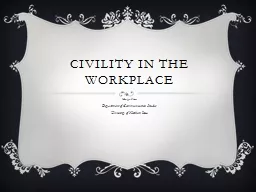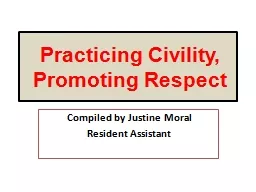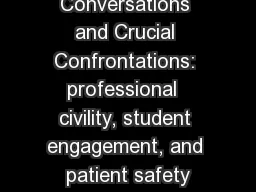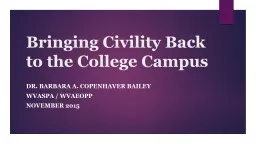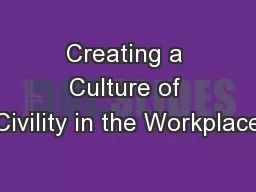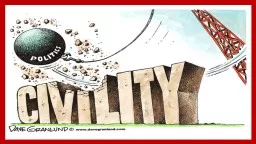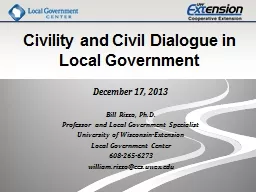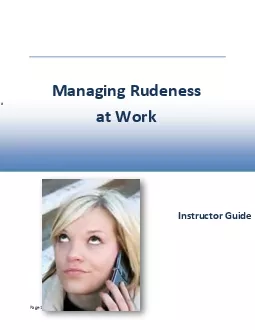PPT-Civility in the Workplace
Author : lois-ondreau | Published Date : 2016-12-14
Marilyn Shaw Department of Communication Studies University of Northern Iowa Examples After the West Des Moines Valley High School principal decreed that there be
Presentation Embed Code
Download Presentation
Download Presentation The PPT/PDF document "Civility in the Workplace" is the property of its rightful owner. Permission is granted to download and print the materials on this website for personal, non-commercial use only, and to display it on your personal computer provided you do not modify the materials and that you retain all copyright notices contained in the materials. By downloading content from our website, you accept the terms of this agreement.
Civility in the Workplace: Transcript
Download Rules Of Document
"Civility in the Workplace"The content belongs to its owner. You may download and print it for personal use, without modification, and keep all copyright notices. By downloading, you agree to these terms.
Related Documents

